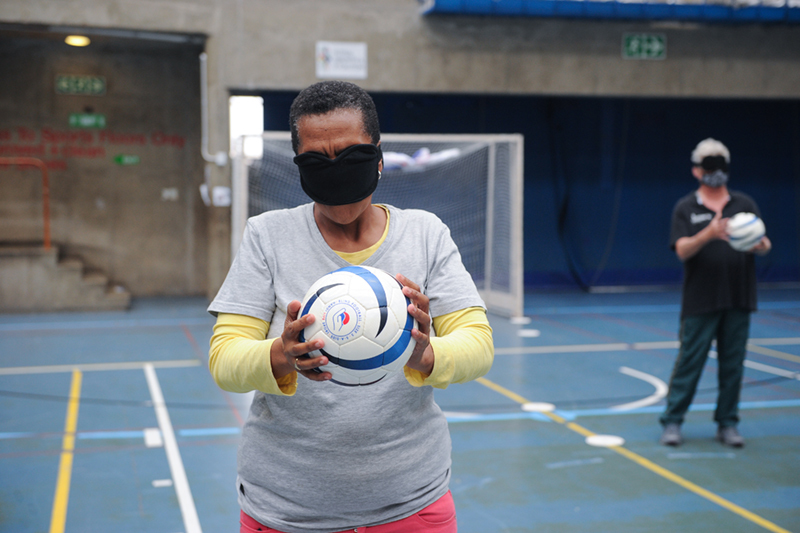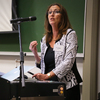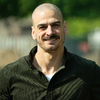Women’s Month: Institutions of learning facilitate vital pathways for participation in parasports
12 August 2022 | Story Niémah Davids. Photos Lerato Maduna. Read time 6 min.
Bridging the gap between academia and parasports underpinned an open discussion during the 6th annual Women in Sport event, hosted by the University of Cape Town’s (UCT) ParaSports Club.
The event was held virtually on Wednesday, 10 August, and was attended by parasport enthusiasts from across campus for an hour of thought-provoking discussions. For the first time in almost a decade, the speaker line-up included an international contributor, Dr Bruna Seron, an academic at the Federal University of Santa Catarina in southern Brazil. And in keeping with tradition, Dr Dominique Brand – a lecturer in UCT’s Faculty of Health Sciences – joined the discussion as a co-contributor.
Disability and sport participation
During the first half of the event, Dr Brand presented a snapshot of her research, which focused on disability and sport participation. Brand lectures monitoring disability in society at UCT’s Division of Disability Studies in the Department of Health and Rehabilitation Sciences, and monitoring and evaluation in the health sector in the Community Eye Health Institute in the Division of Ophthalmology.
“Persons with disabilities must navigate the material and non-material barriers present in sporting environments to gain the same type of access.”
She told the audience that sport is considered a powerful tool to champion the delivery of at least 17 United Nations Sustainable Development Goals (SDGs). Unfortunately, she said, despite great strides in the parasports arena in South Africa, her research revealed that when persons with disabilities participate in sport, they do so in a constrained environment – contrary to able-bodied athletes, who access sporting opportunities freely, at no cost, and without presenting qualifying criterion.
“Persons with disabilities must navigate the material and non-material barriers present in sporting environments to gain the same type of access [as able-bodied athletes]. Persons with disabilities also have to pay a [sporting] premium … and this means that they are excluded from these experiences,” she said.
Women in parasports
Brand stressed the urgent need to design and develop inclusive and accessible sporting codes, policies and practices that place the needs of persons with disabilities at the top of the list, and to ensure equal participation between able-bodied athletes and athletes with disabilities.
Her research focused on “disability and experiences of exclusion and inclusion participation in sports participation”. She said her research sample included interviews with persons with disabilities who participate in an array of parasport, including wheelchair rugby and blind soccer. Based on her findings, she said there is no escaping the underrepresentation of women in parasports. And women also experience far more limitations when compared to their male counterparts.
“Women have more obstacles to deal with. They focus on their homes and taking care of the kids. They have less time for leisure, and a fixed amount of time for sport and recreation,” she said.
Pathways for participation
Institutions of learning play vital roles in facilitating pathways for participation in parasport.
And in relation to the theme, bridging the gap between academia and sport, Brand said several respondents who participated in her research study indicated that they only accessed sport when they re-entered a learning environment. This environment, she explained, was not necessarily a school, university or college, but referred to any institutions of learning where participants were enrolled at the time of participation.
“Either they left school early and [thereafter] had the opportunity to re-enter a training environment, and through that re-entering they [were able] to access sport. So, pathways for participation are definitely facilitated through organisations [of learning],” she said.
Parasport in Brazil
According to Seron, approximately 46 million people in Brazil are currently living with a disability and only 10% participate in parasports or some form of physical activity. She described the figure as alarming and made it her mission to understand the barriers to entry for parasport athletes.
The reasons varied. She said some felt that there were few programmes available, which are specifically aimed at persons with disabilities, while others felt that their physical disabilities restricted them from participating in sport. Some, she added, also received little encouragement from family and friends, and several women highlighted that they weren’t comfortable being coached by males. Echoing Brand, she said students who are enrolled at institutions of learning also had easier access to parasport clubs and societies, when compared to those not enrolled in a school, college or university.
“There are many [opportunities] for persons with disabilities [to access sporting codes] from within an institution, but just [within] the institution. But accessibility [is a] challenge [for those not in a learning environment].”
Outreach programme
Seron said she recently embarked on an outreach programme in partnership with several schools in her community to help bridge the gap between able-bodied learners and learners with disabilities. The goal, she explained, was to change perceptions and to demonstrate that despite their disabilities, persons with disabilities also enjoy participating in sport.
“It was a great experience and helped to [influence] attitudes around parasports.”
The programme included integrated sport sessions that required that able-bodied learners participate in parasports alongside persons with disabilities. She said some of the sports included sitting volleyball, boccia and blind football, and proved to be an eye-opening experience.
“It was a great experience and helped to [influence] and change attitudes around parasports, and [it’s] how we are trying to [improve] the lives [of people living with disabilities],” she said.
 This work is licensed under a Creative Commons Attribution-NoDerivatives 4.0 International License.
This work is licensed under a Creative Commons Attribution-NoDerivatives 4.0 International License.
Please view the republishing articles page for more information.










